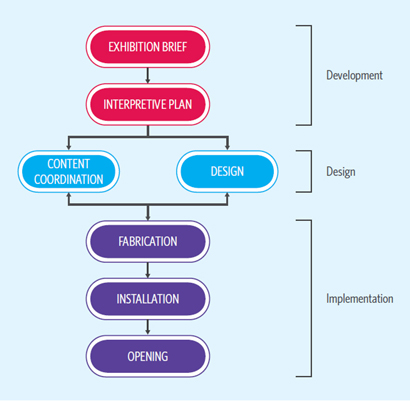It’s finally here – the second edition of the Manual of Museum Exhibitions, a practical guide on how to budget, plan, design and manage your exhibition projects. Since the first edition was published in 2002, our definition of what an exhibition is has changed. While objects and works of art are still paramount, many are virtual, participatory and pop-up migratory experiences. New forms of technology from social media applications to complex integrated systems are challenging the bottom line as well as how we operate.
This second edition of the Manual of Museum Exhibitions explores the exhibition development process in greater detail, providing the technical and practical methodologies museum professionals need today. In particular, we have included whole new and expanded chapters on project management, financial planning, participatory exhibitions and interactive multimedia while retaining the essentials of interpretive planning, curatorship, and roles and responsibilities.
A flexible and adaptable exhibition process holds true for projects of all types whether a small temporary exhibition on a tight timeframe or a multi-million-dollar renovation of a national museum’s permanent collection gallery. Ultimately exhibitions have three distinct phases: development, design and implementation. Each phase is distinguished by the unique skills necessary to complete various works and the resources – both monetary and human – to get it done. Common to all three is good project management. |
|
 In the development phase the exhibition idea or concept is created, tested and refined. The principal outcome of this phase is a deep institutional understanding of what the exhibition is all about, and what time, money and resources are required to achieve it. In the development phase the exhibition idea or concept is created, tested and refined. The principal outcome of this phase is a deep institutional understanding of what the exhibition is all about, and what time, money and resources are required to achieve it.
The design phase is when the interpretive plan is transformed into three-dimensional reality. Developing and coordinating the content for the exhibition becomes an intense and critical process during this stage of the project.
The implementation phase is the building and installation of the exhibition. Project and financial management are crucial to on-time and on-budget success.
The articles in this newsletter provide an enticing snapshot of the rich and practical content to be found in the new Manual. Throughout the book, we stress that the key to success is committing to a process – once agreed upon – and a management approach that will lead you to success. |